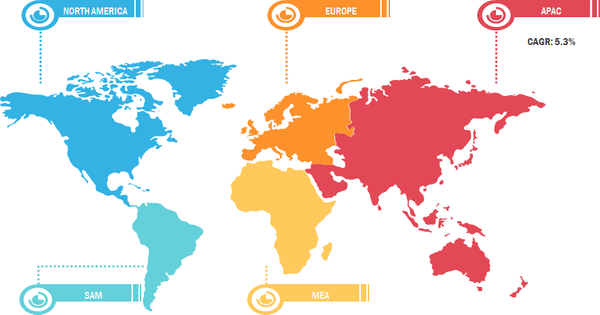Shift from Solvent Adhesive to Hot Melt Adhesive to Bolster Hot Melt Adhesives Market Growth During 2022–2030
According to our latest study on “Hot Melt Adhesives Market Size and Forecast (2020–2030), Global and Regional Share, Trend, and Growth Opportunity Analysis – by Product Type, Type, and Application,” the hot melt adhesives market size is expected to grow from US$ 8.10 billion in 2022 to US$ 12.47 billion by 2030; it is estimated to register a CAGR of 5.5% from 2022 to 2030. The report highlights key factors driving the market growth and prominent players along with their developments in the market.
Hot melt adhesives are solid formulations and inert, which makes them exceptionally easy to handle and transport. There are various benefits of hot melt adhesives, including enhanced product performance, increased production volume, cost effectiveness, versatility, and sustainability. Hot melt adhesives are made by using raw materials from plants and other forestry materials. This helps businesses reduce their carbon footprint. Hot melts are thermally stable and ensure minimal charring and reduced nozzle blockages, thus helping to boost production uptime. Also, hot melt adhesives are easy to set up and ideal for high-volume production. Also, they provide consistent application and reduce material waste.
Hot Melt Adhesives Market Breakdown – by Region
Hot Melt Adhesives Market Size and Forecast (2020–2030), Global and Regional Share, Trend, and Growth Opportunity Analysis Report Coverage: By Product Type (Glue Sticks, Glue Slugs, and Others), Type (Ethylene Vinyl Acetate, Polyolefins, Polyamides, Polyurethanes, Styrene Block Copolymers, and Others), Application (Packaging, Construction, Automotive, Furniture, Footwear, Electronics, and Others), and Geography
Hot Melt Adhesives Market Forecast and Size by 2030
Download Free Sample
Hot melt adhesives have superior properties such as versatility, resistance to water and moisture, and low cost, making these adhesives the ideal choice for many applications. The adhesives are used when the glued products can be in contact with water or moisture, including boxes for shipping food. Utilizing traditional glues in such cases can take several minutes for adhesion, and they can cause a worker to hold on to the items to keep the two surfaces together until the glue dries. With hot melt adhesives, the drying time has been cut down to seconds, leaving the person free to continue with the next task. Hot melt adhesives are preferred over solvent adhesives among various end-use industries owing to their advantages such as eco-friendliness, high productivity induced by process automation, and re-adhesion possibility. Hot melt adhesives do not need any drying or curing like solvent-based adhesives. These adhesives can apply in the molten state itself, so that it can be bonded immediately post-application. This further provides hot melt adhesives a significant advantage of faster processing time when applied to food packaging, consumer goods packaging, furniture, crafting, and others. Hot melt adhesives can also be disposed of by taking special precautions, and they have a longer shelf life than typical adhesives. Due to all these benefits, various industries prefer hot melt adhesives over solvent-based adhesives, driving the global hot melt adhesives market growth.
H.B. Fuller Company, Henkel AG & Company KGaA, Arkema, 3M, Sika AG, Jowat SE, Hexcel Corporation, The Dow Chemical Company, Beardow Adams, and Gorilla Glue Company are a few players operating in the global hot melt adhesives market. Players operating in the global market focus on providing high-quality products to fulfill customer demand. Also, they focus on adopting various strategies such as new product launches, capacity expansion, partnerships, and collaborations to stay competitive in the market.
Impact of COVID-19 Pandemic on Hot Melt Adhesives Market
The COVID-19 pandemic has adversely altered the status of the chemicals & materials sector and hindered the hot melt adhesives market growth. The implementation of measures to combat the virus spread has aggravated the situation and restrained the growth of various industries. Many industries have been adversely affected by the distortion in operational efficiencies and disruptions in the value chains attributable to the sudden restrictions on national and international boundaries. Negative impact of the pandemic on industries such as automotive, consumer goods, medical, building & construction, packaging, and others reduced the demand for hot melt adhesives. Due to the COVID-19 pandemic, the automotive industry experienced a decline in sales of vehicles, which resulted in low demand for hot melt adhesives. Also, the reduced construction activities in the residential & commercial sector negatively impacted the market growth.
In 2021, various industries restarted their business activities, which propelled the demand for hot melt adhesives. Also, increasing activities in construction, packaging, automotive, and other industries positively impacted the global hot melt adhesives market growth.
The report includes the segmentation of the hot melt adhesives market as follows:
The global hot melt adhesives market is segmented on the basis of product type, type, application, and geography. Based on product type, the market is segmented into glue sticks, glue slugs, and others. By type, the market is segmented into ethylene vinyl acetate, polyolefins, polyamides, polyurethanes, styrene block copolymers, and others. By application, the market is segmented into packaging, construction, automotive, furniture, footwear, electronics, and others. By geography, the hot melt adhesives market is broadly segmented into North America, Europe, Asia Pacific, the Middle East & Africa, and South & Central America. The North American market is further segmented into the US, Canada, and Mexico. The market in Europe is subsegmented into Germany, France, the UK, Italy, Russia, and the Rest of Europe. The Asia Pacific market is segmented into China, India, Japan, Australia, South Korea, and the Rest of Asia Pacific. The market in the Middle East & Africa is further segmented into South Africa, Saudi Arabia, the UAE, and the Rest of Middle East & Africa. The South & Central America market is further segmented into Brazil, Argentina, and the Rest of South & Central America.
Contact Us
Phone: +1-646-491-9876
Email Id: sales@theinsightpartners.com